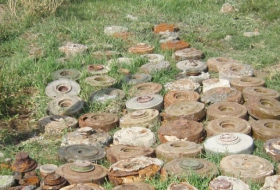The Diamond Eagle medal is the badge of office of the president general of the Society of the Cincinnati, which was founded by Continental Army officers at the end of the Revolutionary War. The society, which takes its name from Cincinnatus, the general credited with saving the Roman republic, is the nation’s oldest patriotic organization and aims to preserve the memory of the American Revolution.
Commissioned by officers of the French Navy, the gold and silver medal is embedded with almost 200 diamonds, rubies and emeralds. The Diamond Eagle was presented to Washington in May 1784 at Philadelphia’s City Tavern near the current Museum of the American Revolution.
The priceless medal is surrounded by tight security at the museum, which is using a specially-designed case to display the artifact next its Washington’s War tent theater.
The medal is on display until March 3, 2018.
“The Diamond Eagle epitomizes the idea of Washington as the ‘American Cincinnatus,’ the ultimate citizen-solider who put the good of the nation ahead of his own and returned his power back to the people,” said Michael C. Quinn, CEO of the Museum of the American Revolution, in a statement. “It is fitting for us to present it alongside Washington’s War Tent, which signifies Washington’s selfless devotion to the cause of the Revolution and his tireless support of his soldiers. We couldn’t be more grateful to the Society of the Cincinnati for allowing us to present this precious artifact to the American public.”
“We couldn’t be more delighted to see the Diamond Eagle make its return to Philadelphia, the city where it was presented to George Washington,” said Jack D. Warren, Jr., Executive Director of the Society of the Cincinnati, in a statement. “The Diamond Eagle embodies the idea that the American Revolution is an event of transcendent importance in world history. Remembering the Revolution is a charge that is passed down from one citizen of our republic to the next, just as the Diamond Eagle has been passed down for more than 200 years.”
Pierre Charles L’Enfant, the French-born military engineer who served in the Revolutionary War and is best known for designing the layout of Washington D.C., designed the society’s insignia, which is based on the American Bald Eagle. L’Enfant traveled to France in 1783 to have the Eagle made by Parisian goldsmiths.
The display coincides with the museum’s exhibition of a painting depicting the Continental Army’s encampment at Verplanck’s Point, New York, in the fall of 1782. The painting, which experts have attributed to L’Enfant, clearly shows Washington’s Tent.
After Washington’s death in 1799, the medal was sent to Alexander Hamilton, who, the following year, succeeded Washington as president general of the Society of the Cincinnati. Following Hamilton’s death in a duel with Aaron Burr in 1804, his widow sent the medal to Charles Cotesworth Pinckney on his election as president general of the society in 1805. The Diamond Eagle continues to be passed down to each president general.
It could not be immediately learned if the medal has been appraised.
Revolutionary War artifacts offer a fascinating glimpse into the events that shaped America. A storied Revolutionary War musket ball that was melted from a famously toppled statue of King George III, for example, went on display at the Museum of the American Revolution earlier this year. The Museum also recently displayed George Washington’s sash from the Revolutionary War.
An extremely rare silver-hilted sword used by an American officer during the Revolutionary War is set to go on display for the first time at the Museum next year.
In August, a Revolutionary War-era knife was unearthed during an archaeological dig at Colonial Michilimackinac in Mackinaw City, Michigan, the latest in a series of amazing finds at the site.
The following month, archaeologists in Boston discovered a centuries-old outhouse that may be linked to the family of Patriot Paul Revere.
More about: #George-Washington















































